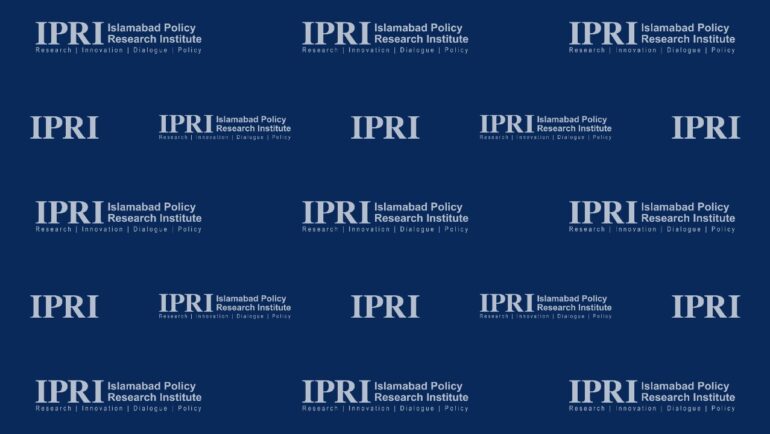
Introduction
Presentation on “China’s relations with South Asian Countries” by Ms. Asiya Mahar, Assistant Research Officer was organized by Islamabad Policy Research Institute, Islamabad on August 29, 2014 at IPRI Conference Hall.
Salient Points:
Key points of presentation are mentioned hereafter:
• China’s involvement in Asia is a main focus of its foreign policy and part of China’s multilateral strategy aims at enhancing its role at regional and global level.
• Chinese discourse on South Asia particularises three levels of China’s engagement in this region. Firstly, China attempts to institutionalize China–South Asia network; secondly, China wants to strengthen bilateral ties with individual countries of South Asia; and thirdly, China explores possibility of cooperation on infrastructure and energy sectors, i.e., cooperation that ensures investments by Chinese enterprises.
• In South Asia, China has an active but limited role. China’s engagement with South Asia has precautionary elements due to India-Pakistan rivalry, past and present power struggle among global powers, i.e., U.S. and Russia, lack of interest towards promoting regionalism in South Asia and Indian reluctance to let China become member of SAARC.
• An important dimension of the evolving Sino-Indian economic relationship is based on energy requirements of their industrial expansion and their readiness to proactively secure them by investing in the oilfields in Africa, Middle East and Central Asia.
• Chinese concern related to expansion of cooperative ties with India pertains to convincing that country for not becoming part of US’ plan to contain its rise (a claim which China feels is “evidenced” by the US-India Civilian Nuclear Agreement) and to peacefully resolve contentious border issues and territorial claims with India.
• Indian concerns include avoiding an arms race with China, avoiding entanglement in the US-China rivalry, avoiding being kept in check by China and China’s all weather friendship with Pakistan.
• Issues of common interest that exist between China and Pakistan are Afghan problem, continuing instability in Central Asia and the issue of Kashmir.
The impediments that affect Chinese cooperation with South Asian countries are mentioned hereafter:
• Countries in South Asia are geographically disproportionate in size and economic development.
• India carries a central position in the region in terms of its geographical location, its size and its economy.
• China’s two unstable regions, i.e., Xinjiang and Tibet bordering on South Asian region are vulnerable to terrorism.
• Economic tie-ups and greater trade integration with South Asian countries has been obstructed by tension between India and Pakistan and fear of Indian trade domination in South Asia.
• Countries of South Asia have no experience of working together in the past for common regional purposes. The sense of nationalism dominates which is not conducive to regional approach.
• Most of the countries within South Asia mark their bilateral relations with suspicion, misunderstanding and even conflict. Consequently, political rivalries are leading to lessening cooperation.
• In addition, the involvement of the global powers in South Asia and intra-regional relations in South Asia has limited options at regional and international levels.
In an effort to effectively engage China and enhance its bilateral and multilateral cooperation with South Asian neighbours, following recommendations can be made:
• Small states of South Asia can capture opportunities and become a centre of geopolitical competition between rising China and India.
• For stability in South Asia, economics should override politics.
• Trade relations between China and South Asian countries can be enhanced through utilization of further tariff concessions under Asia Pacific Trade Agreement and through granting duty free access to South Asian products in Chinese markets.
• Stable and prosperous South Asia can address security concerns of three nuclear states, i.e., China, India and Pakistan.
• Efforts should be made to assist South Asian countries in not only knowing the ways of regional cooperation, but also the how’s of it.
• In view of improvement in China-India ties, Pakistan should further deepen its relations with China in socio-economic, political and strategic arenas to be reinforced by increased people to people contact.


